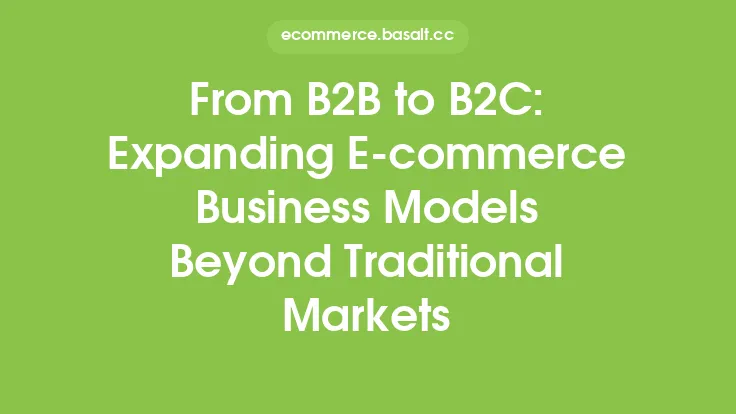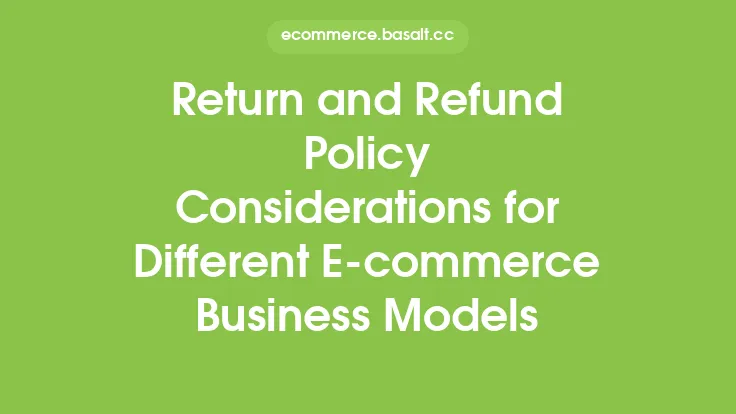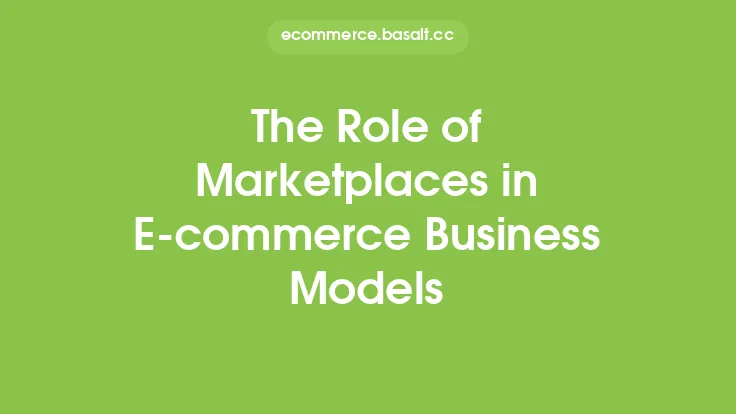The rise of e-commerce has significantly altered the retail landscape, forcing traditional brick-and-mortar stores to adapt and innovate in order to remain competitive. At the forefront of this revolution are innovative e-commerce business models that are disrupting traditional retail and changing the way consumers shop. These models are not only providing customers with more convenience, flexibility, and personalized experiences but are also creating new opportunities for businesses to reach and engage with their target audiences.
Introduction to Innovative E-commerce Business Models
Innovative e-commerce business models are designed to meet the evolving needs and preferences of consumers, who are increasingly expecting seamless, omnichannel shopping experiences. These models often leverage technology, data analytics, and social media to create engaging, interactive, and personalized experiences that drive customer loyalty and retention. Some of the key characteristics of innovative e-commerce business models include a focus on customer experience, the use of data and analytics to inform decision-making, and a commitment to continuous innovation and improvement.
Key Features of Disruptive E-commerce Business Models
Disruptive e-commerce business models often share certain key features, including a focus on convenience, flexibility, and personalization. These models may also incorporate elements of social commerce, such as user-generated content, social media integration, and influencer marketing. Additionally, disruptive e-commerce business models often prioritize sustainability, social responsibility, and community engagement, recognizing that these values are increasingly important to consumers. Some examples of disruptive e-commerce business models include online marketplaces, social commerce platforms, and direct-to-consumer brands.
The Role of Technology in Disrupting Traditional Retail
Technology has played a crucial role in disrupting traditional retail, enabling the creation of innovative e-commerce business models that are more efficient, effective, and customer-centric. Some of the key technologies driving this disruption include artificial intelligence, blockchain, and the Internet of Things (IoT). These technologies are being used to create personalized product recommendations, streamline supply chain management, and enhance the overall customer experience. Additionally, technologies such as augmented reality (AR) and virtual reality (VR) are being used to create immersive, interactive shopping experiences that blur the lines between online and offline retail.
Examples of Innovative E-commerce Business Models
There are many examples of innovative e-commerce business models that are disrupting traditional retail. One example is the online marketplace model, which allows multiple sellers to list and sell their products on a single platform. This model has been successfully implemented by companies such as Amazon and eBay, which have created vast online marketplaces that offer a wide range of products and services. Another example is the direct-to-consumer model, which involves selling products directly to customers through online channels, bypassing traditional retail intermediaries. This model has been successfully implemented by companies such as Warby Parker and Dollar Shave Club, which have created strong brands and loyal customer followings through their online channels.
Challenges and Opportunities in Implementing Innovative E-commerce Business Models
Implementing innovative e-commerce business models can be challenging, requiring significant investments in technology, talent, and marketing. However, these models also offer many opportunities for businesses to drive growth, increase customer engagement, and improve operational efficiency. Some of the key challenges associated with implementing innovative e-commerce business models include the need to integrate multiple technologies and systems, the requirement to develop new skills and competencies, and the risk of disrupting existing business models and revenue streams. However, the opportunities offered by these models, including the ability to reach new customers, create new revenue streams, and improve customer satisfaction, make them an essential consideration for businesses seeking to remain competitive in the digital age.
Best Practices for Implementing Innovative E-commerce Business Models
There are several best practices that businesses can follow when implementing innovative e-commerce business models. These include a focus on customer experience, a commitment to continuous innovation and improvement, and a willingness to experiment and take risks. Businesses should also prioritize data-driven decision-making, using analytics and insights to inform their strategies and optimize their operations. Additionally, businesses should be prepared to invest in the necessary technologies and talent to support their e-commerce initiatives, recognizing that these investments are essential to driving long-term growth and success.
Conclusion
Innovative e-commerce business models are disrupting traditional retail, offering customers more convenience, flexibility, and personalized experiences. These models are also creating new opportunities for businesses to reach and engage with their target audiences, drive growth, and improve operational efficiency. By understanding the key features and characteristics of innovative e-commerce business models, businesses can develop effective strategies for implementing these models and achieving success in the digital age. Whether through online marketplaces, direct-to-consumer sales, or social commerce platforms, innovative e-commerce business models are revolutionizing the retail landscape and creating new opportunities for businesses to thrive.





